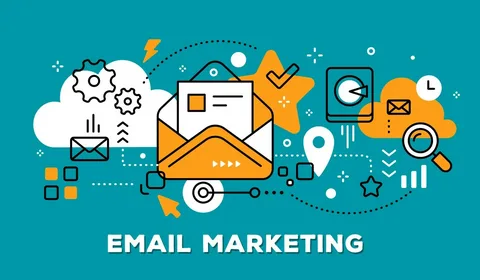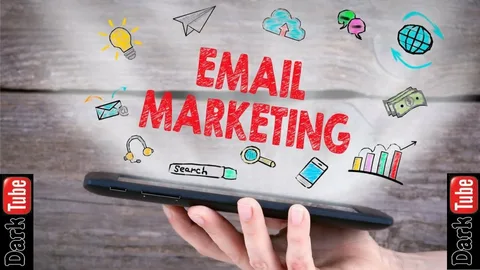Insider Tips for Mastering Mailchimp and HubSpot to Boost Email Marketing in 2025
Blog Outline:
- Introduction
- Importance of email marketing in 2024
- Why tools like Mailchimp and HubSpot matter
- Brief overview of what to expect in the blog
- Why Email Marketing Matters in 2024
- Trends driving email marketing in the UK
- How businesses are using email marketing for better engagement
- Overview of Mailchimp and HubSpot
- What makes Mailchimp and HubSpot popular in the UK
- Key features of each tool for email campaigns
- Getting Started with Mailchimp and HubSpot
- Step-by-step guide to setting up accounts
- How to choose the right tool based on your business needs
- Insider Tips for Using Mailchimp in Email Marketing
- Creating effective email templates
- Using audience segmentation to drive engagement
- Analysing campaign performance for improvement
- Insider Tips for Using HubSpot in Email Marketing
- Setting up workflows for automation
- Personalising emails for better open rates
- Tracking user behaviour with HubSpot’s analytics tools
- How to Combine Mailchimp and HubSpot for Maximum Impact
- Integrating the tools for seamless operations
- Sharing data across platforms for consistent messaging
- Best Practices for Email Marketing in the UK
- Timing and frequency of emails
- Complying with GDPR regulations
- Writing subject lines that resonate with UK audiences
- Troubleshooting Common Email Marketing Challenges
- How to fix low open and click rates
- Dealing with spam issues
- Conclusion
- Recap of the tips shared
- Encouragement to start optimising your email marketing with Mailchimp and HubSpot

Blog Content:
Introduction
Email marketing is far from outdated; in fact, it’s one of the most powerful tools for businesses to engage their audience, drive sales, and build lasting relationships. With 2024 presenting new opportunities for digital marketers, tools like Mailchimp and HubSpot have become essential for creating campaigns that get results. This blog reveals how Mailchimp and HubSpot could help you in email marketing and provides actionable tips to boost your efforts.
Why Email Marketing Matters in 2024
Email marketing continues to outperform other channels like social media in ROI. In the UK, email open rates are above the global average, making it an even more effective tool for businesses. In 2024, trends like AI-driven personalisation and interactive emails are expected to dominate. Leveraging tools like Mailchimp and HubSpot can help you stay ahead by simplifying these processes.
Overview of Mailchimp and HubSpot
Mailchimp: Known for its user-friendly interface, Mailchimp offers robust tools for small businesses to design emails, manage audiences, and track performance.
HubSpot: A CRM powerhouse, HubSpot goes beyond email marketing by integrating lead tracking, sales automation, and customer management into one platform.
Getting Started with Mailchimp and HubSpot
- Mailchimp Setup:
- Sign up for an account at mailchimp.com.
- Choose the pricing plan that fits your needs.
- Import your contacts and organise them into lists.
- HubSpot Setup:
- Visit hubspot.com and create an account.
- Integrate your website for seamless tracking.
- Start by using free tools to explore its features.

Insider Tips for Using Mailchimp in Email Marketing
- Designing Eye-Catching Templates:
Use Mailchimp’s drag-and-drop editor to create visually appealing emails that match your brand. Add dynamic content like product recommendations. - Segment Your Audience:
Break your audience into smaller groups based on demographics, past purchases, or engagement. This helps in sending targeted emails that resonate. - Monitor Performance:
Use Mailchimp’s reports to check metrics like open rates and click-through rates. Experiment with A/B testing to see what works best.
Insider Tips for Using HubSpot in Email Marketing
- Automation Made Easy:
HubSpot allows you to automate repetitive tasks like sending welcome emails or following up after a purchase. Use pre-set workflows to save time. - Personalisation is Key:
Personalise your emails by addressing recipients by name or referencing their recent activity. HubSpot’s CRM features make this easy to implement. - Use Data to Improve:
HubSpot’s analytics help you understand user behaviour. Look at metrics like email engagement and website activity to refine your campaigns.
How to Combine Mailchimp and HubSpot for Maximum Impact
Integrating Mailchimp and HubSpot gives you the best of both worlds. Sync your contacts between the platforms to ensure consistency. Use HubSpot’s CRM for lead tracking and Mailchimp for designing and sending campaigns.

Best Practices for Email Marketing in the UK
- Timing and Frequency:
Research shows emails sent on Tuesdays and Thursdays perform better. Avoid bombarding your audience; one to two emails per week are ideal. - Stay GDPR-Compliant:
Ensure you have permission to email your contacts. Include an easy-to-find unsubscribe option in all your emails. - Write Engaging Subject Lines:
UK audiences respond well to subject lines that are concise and offer clear value. Use tools like CoSchedule’s Headline Analyzer for ideas.
Troubleshooting Common Email Marketing Challenges
- Low Open Rates:
Check if your subject lines are compelling. Try resending emails to non-openers with a different subject line. - Spam Issues:
Avoid spammy language like “Free” or excessive punctuation. Test your emails using tools like MailTester before sending.
Conclusion
Mastering email marketing in 2024 starts with the right tools and strategies. By understanding how Mailchimp and HubSpot could help you in email marketing, you’re already a step ahead. Use the tips and steps outlined in this blog to optimise email marketing with tools that simplify your work and deliver real results.




Post Comment